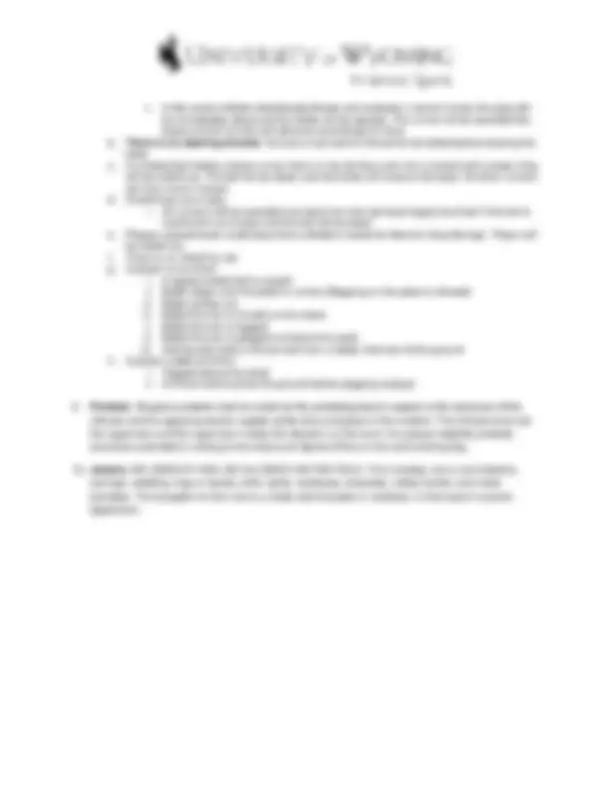



Study with the several resources on Docsity

Earn points by helping other students or get them with a premium plan


Prepare for your exams
Study with the several resources on Docsity

Earn points to download
Earn points by helping other students or get them with a premium plan
Community
Ask the community for help and clear up your study doubts
Discover the best universities in your country according to Docsity users
Free resources
Download our free guides on studying techniques, anxiety management strategies, and thesis advice from Docsity tutors
The rules for intramural kickball games, including eligibility requirements, general gameplay guidelines, and specific rules for pitching, kicking/batting, baserunning/fielding, and protests. Adherence to these rules is mandatory for all participants.
What you will learn
Typology: Lecture notes
1 / 2

This page cannot be seen from the preview
Don't miss anything!


All participants are required to follow normal guidelines set forth in the Intramural Handbook General rules adapted for Intramural Play: in other cases, current W.A.K.A. rules will be in effect
a. Teams will pitch to their own kickers. A member of the defensive team will position themselves no closer than 3 feet from the pitcher to act as the fielder. b. Pitchers of the kicking team will not be responsible for playing defense. When the pitcher is struck by a kicked ball before it passes a member of the defensive team, the kicker will be called out and runners must return to the base occupied at the time of the at bat. In all other situations, the pitcher must move clearly out of the way of a defender making a play or the potential path of the throw. If, in the umpire’s opinion, the pitcher interferes with any part of a defense’s play, the umpire may call a runner or kicker out. c. In the act of delivering the ball to the kicker, the pitcher shall stand with at least one foot in contact with the pitching rubber until the ball leaves the pitcher’s hand. Bounces are permitted.
a. Bunting is not allowed. A full kick attempt must be made at the ball. Bunting will be called an out. A full kick attempt will be left to the discretion of the umpire. b. Each kicker will receive a maximum of 3 pitches. If a kicker allows three pitches to pass and has not kicked the ball legally in play, the kicker will be out. A foul on the third pitch is an out. c. The batter may not step in front of the plate to kick the ball. They are allowed to step on or next to home plate. d. There are no walks. e. If a ball that is legally kicked lands in bounds but then goes foul before the third and first base, it is a foul ball. If a legally kicked ball lands in bounds after first/third base, then goes foul, it is considered a fair ball.
a. Pegging is allowed but ONLY if it is from the waist or below. i. If a runner lowers their body to be hit above the waist, this will be called interference and the runner will be out. (Same rules apply when sliding into a base) ii. Jumping to avoid a throw is allowed. iii. If a runner is incidentally pegged above the waist they will be awarded the base they are advancing to and the ball remains live. iv. A peg is a live throw, and not a kick from the defensive team.
v. In the event a fielder intentionally throws and contacts a runner’s head, the play will be immediately dead and the fielder will be ejected. The runner will be awarded two bases and all runners will advance accordingly to force. b. There is no stealing allowed. Runners must wait for the ball to be kicked before leaving the base c. If a kicked ball strikes a base runner that is in fair territory and not in contact with a base, they will be called out. The ball will be dead, and the kicker will receive first base. All other runners will only move if forced. d. Overthrows out of play i. All runners will be awarded one base from the last base legally touched if the ball is overthrown out of play and the ball will be dead. e. Players cannot knock a ball loose from a fielder’s hands for them to “drop the tag”. Player will be called out. f. There is no infield fly rule. g. A player is out when: i. A legally kicked ball is caught ii. Batter steps over the plate on a kick (Stepping on the plate is allowed) iii. Batter strikes out iv. Batter/Runner is forced out at a base v. Batter/Runner is tagged vi. Batter/Runner is pegged out below the waist vii. Intentionally kicks a thrown ball from a fielder that has hit the ground h. A player is not out when: i. Pegged above the waist ii. A thrown ball touches the ground before pegging a player
officials and the opposing team’s captain at the time and place of the incident. The officials shall call the supervisor and the supervisor makes the decision on the court. Any player eligibility protests should be submitted in writing to the Intramural Sports Office on the next working day.
earrings, wedding rings or bands, other rights, necklaces, bracelets, rubber bands, and metal barrettes. The exception to this rule is a medic alert bracelet or necklace. In that case it must be taped town.